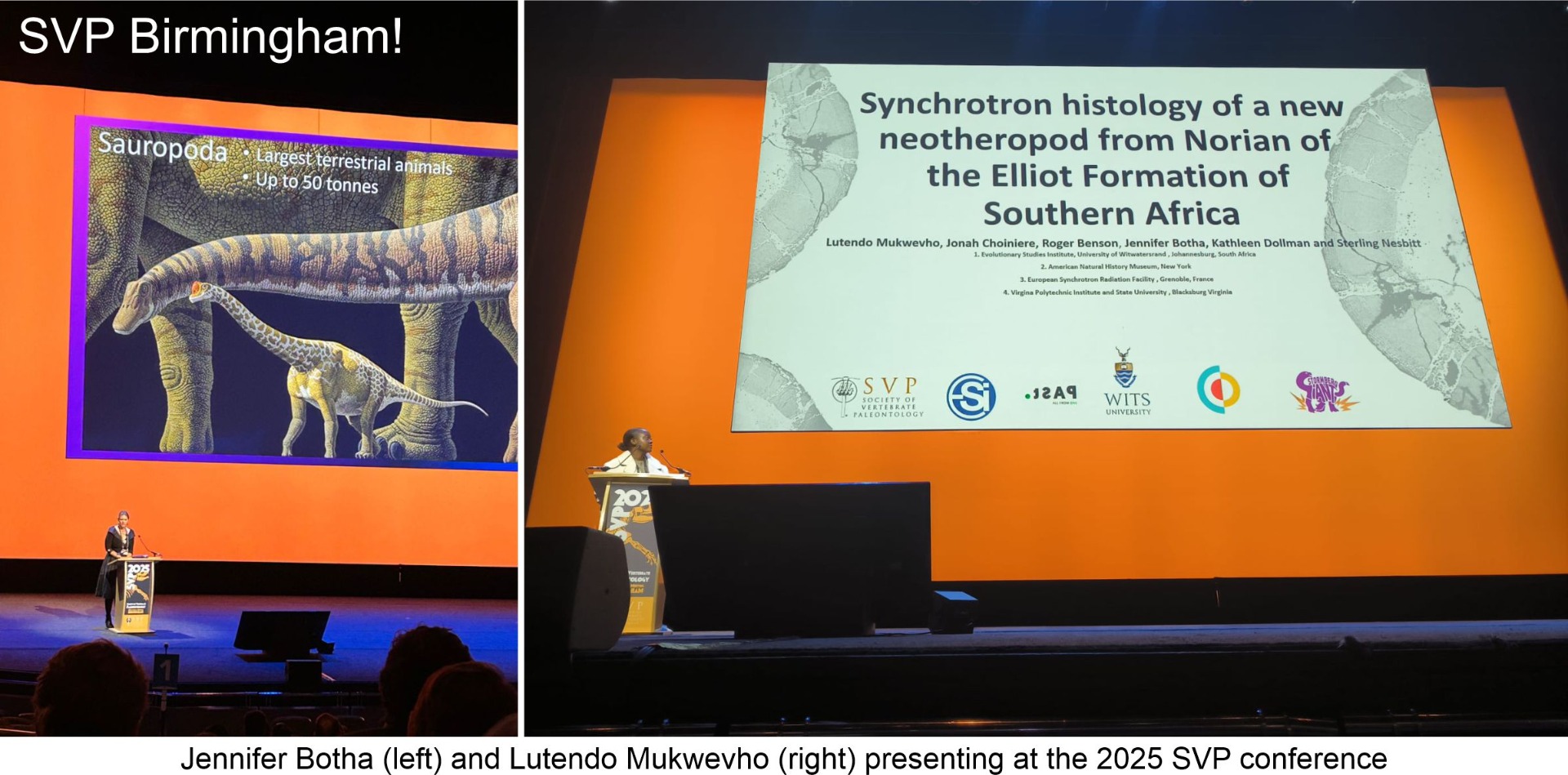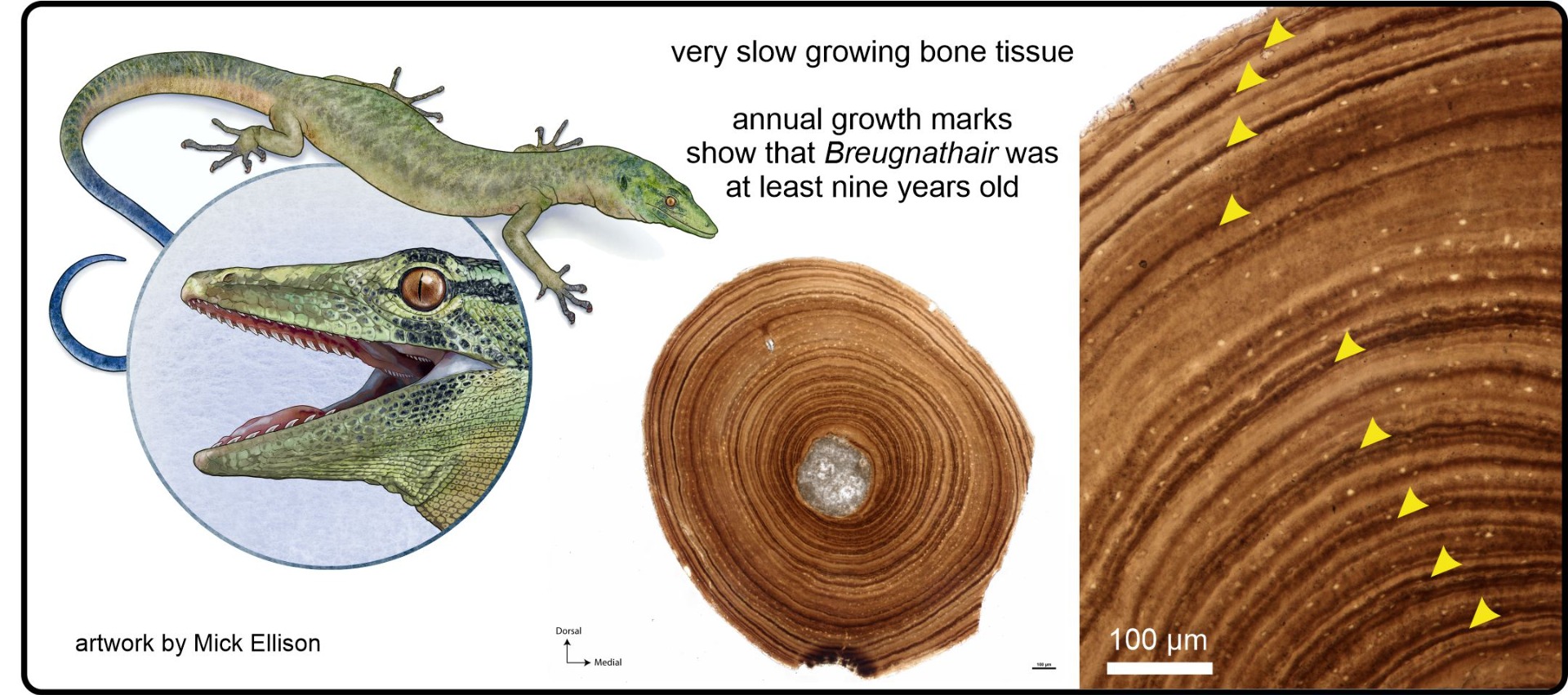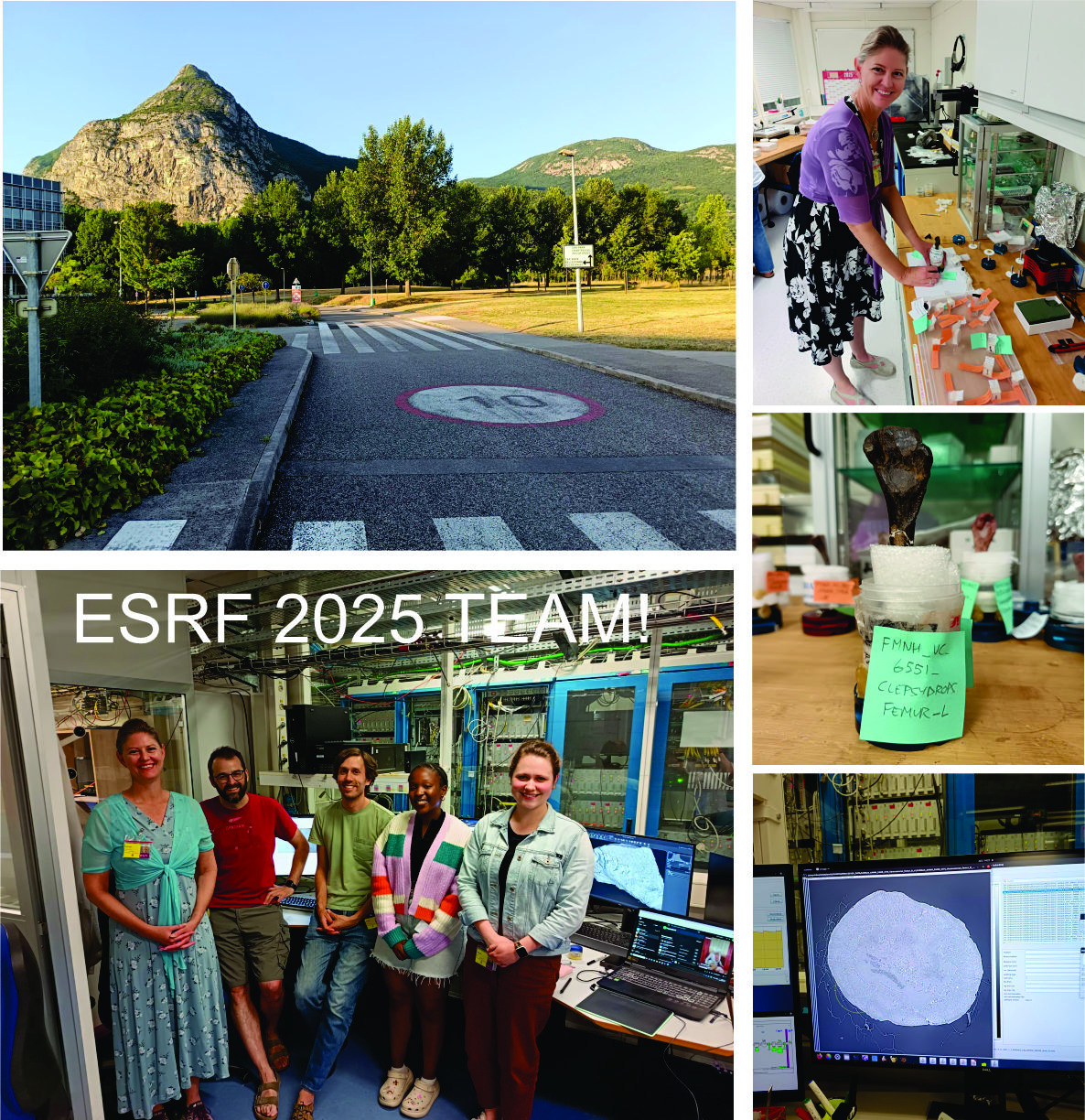My student, Lutendo Mukwevho, and I recently attended the Society of Vertebrate Paleontology meeting in Birmingham, UK, where we presented some of our latest research. Lutendo shared exciting new work on large theropods from South Africa, while I presented on growth strategies in sauropodomorphs across the end-Triassic extinction. It was wonderful...

i
Lab News
New Middle Jurassic Snake-like Lizard
A fossil discovered on the Isle of Skye, Scotland has revealed a new species and family of Jurassic reptile linked to the origins of lizards and snakes. The bone histology of this strange animal indicates that this species grew incredibly slowly. Breugnathair elgolensis, recently published in Nature, has snake-like features of the teeth and jaws,...
European Synchrotron Research Facility Visit
My student Enele Twala and I have just returned from a trip to Grenoble, France to work at the ESRF. Enele is studying basal amniote bone histology, focusing on squamates. Roger Benson and Zoe Kulik from the American Museum of Natural History joined us to work on a project on bone tissue patterns in basal amniotes including some very rare...
International Symposium on Palaeohistology
Every second year we have the International Symposium on Palaeohistology. This year it was in Brisbane, Australia. I presented ongoing research on the growth patterns of sauropodomorph dinosaurs. Sauropodomorph dinosaurs, the largest land animals to ever exist, evolved from small bipedal ancestors in the Carnian stage to multi-tonne giants by the...
Field Work on the Permo-Triassic Boundary
Here's some photos from our latest field trip – it's an NSF-funded project on the Permo-Triassic boundary with Adam Huttenlocker from the University of Southern California, Ken Angielczyk and Pia Viglietti from the Field Museum in Chicago, Claire Browning from Iziko Museums of South Africa and Roger Smith from the University of the Witwatersrand....
How gorgonopsians lived
A recent study on gorgonopsian bone histology revealed that they experienced rapid growth during favourable conditions but also showed numerous annual growth marks in their bones. After the Permo-Triassic mass extinction some 252 million years ago, surviving species in the Early Triassic grew quickly and reached adulthood within a year, likely due...
In a remarkable journey back to the Jurassic Era, scientists have used cutting-edge technology to uncover secrets about Orthosuchus stormbergi, a small, early ancestor of today's crocodiles. Unlike its modern relatives, which are renowned for their massive size and aquatic prowess, this tiny croc offers unique insights into the evolution of its...
Imagine a world on the brink of collapse: volcanic eruptions spewing toxic gases, oceans turning acidic, and up to 90% of Earth's species vanishing in the blink of an eye. This was the reality at the end of the Permian Period, around 252 million years ago, during Earth's most catastrophic mass extinction event. Yet, amid this global upheaval, a...
By investigating the internal structure of fossil bones of 200 million-year-old fossil crocodile ancestors (known as crocodylomorphs) from South Africa, a team of researchers has shown that they grew slowly, similar to their living descendants. "After studying the internal structure of the bones of the animal we were surprised to find that the bone...
A groundbreaking discovery in South Africa has unveiled a new top predator species that lived 252 million years ago and went extinct during the catastrophic Permian-Triassic mass extinction. This finding sheds light on the dramatic events that occurred during this pivotal moment in Earth's history, providing valuable insights into ancient...









